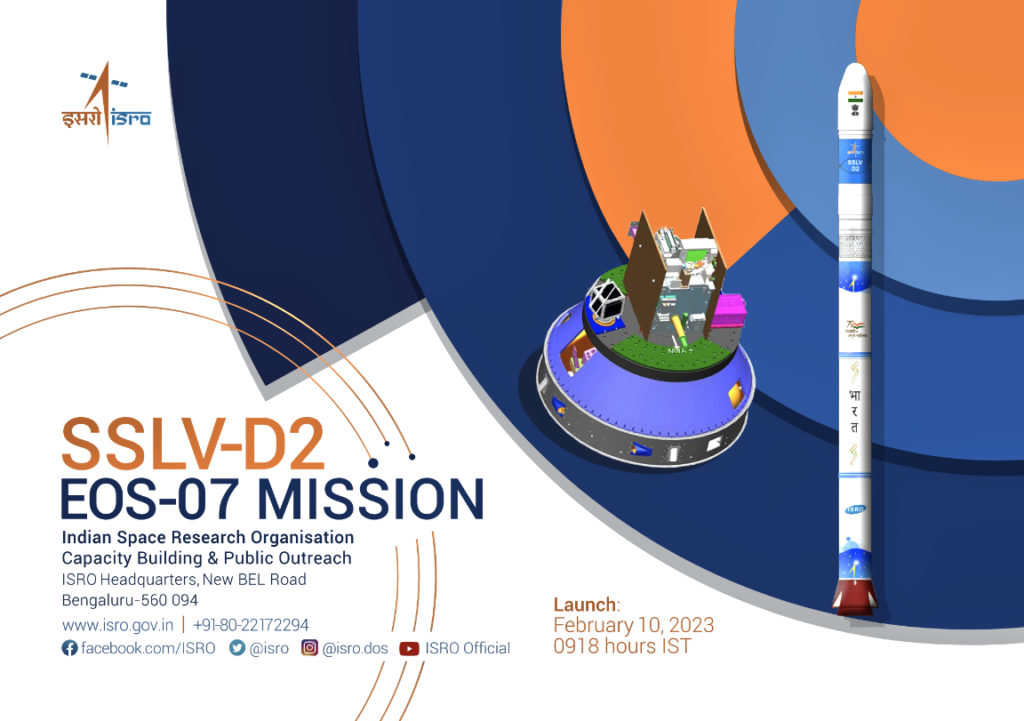
ISRO‘s Small Satellite Launch Vehicle (SSLV) successfully launched three satellites into their intended orbits.

This was the rocket’s second developmental flight and the SSLV-D2 vehicle placed EOS-07, Janus-1 and AzaadiSAT-2 satellites into their intended 450 km circular orbit with an inclination of 37 degrees. SSLV-D2 took-off from the first launch pad at Satish Dhawan Space Centre, Sriharikota, and required about 15 minutes to inject the satellites.

SSLV is the new smallsat launch vehicle developed by ISRO to cater the launch of small satellites up to 500 kg to LEO on ‘launch-on-demand’ basis. The rocket is configured with three solid stages 87 t, 7.7 t and 4.5 t, respectively.
SSLV is a 34 m tall, 2 m diameter vehicle, having a lift-off mass of 120 t. A liquid propulsion-based Velocity Trimming Module (VTM) achieves desired velocity for the insertion of the satellites into the intended orbit.
SSLV is capable of launching Mini, Micro, or Nanosatellites (10 to 500 kg mass) to a 500 km orbit. It provides low-cost access to Space, offers low turn-around time, facilitates flexibility in accommodating multiple satellites and demands minimal launch infrastructure.
In its first developmental flight on August 7, 2022, SSLV-D1 marginally missed placing its satellites payload. SSLV-D2 implemented the recommendations made by the expert committee that analyzed the shortcomings of that SSLV-D1 flight.
SSLV-D2 carried EOS-07, a 153.6 kg EO satellite realised by ISRO; Janus-1, a technology demo satellite weighing 10.2 kg belonging to ANTARIS, USA; and AzaadiSAT-2, a 8.8 kg satellite realized by Space Kidz India by integrating various scientific payloads that were developed by 750 female students across India.
With this successful launch, India now has a launch vehicle that will support smallsat launches.
